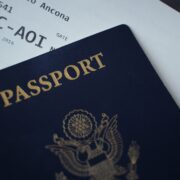
After nearly five months, the U.S. State Department lifted its blanket global Level 4 Health Advisory that advised U.S. citizens to avoid all international travel due to the impact of the COVID-19 pandemic, and returned to issuing its warnings to individual countries.
“With health and safety conditions improving in some countries and potentially deteriorating in others, the Department is returning to our previous system of country-specific levels of travel advice (with Levels from 1-4 depending on country-specific conditions), in order to give travelers detailed and actionable information about the current status in each country,” the department said in a news release on Thursday, August 6.
“We are closely monitoring health and safety conditions across the globe, working in partnership with the CDC and other agencies. As always, we will regularly update our destination-specific advice to U.S. travelers as conditions evolve,” it added.
The Level 4 “Do Not Travel” advisory — the strictest travel advisory warning Americans against international travel — was put in place on March 19 as the coronavirus pandemic began to impact the U.S.
Citizens abroad — including in the Philippines — were encouraged to either return to the U.S. or stay abroad indefinitely.
As of Friday, about 30 countries like Argentina, China, Belize, the Bahamas, Saudi Arabia, and Mexico continued to have their own Level 4 advisory.
The Philippines was issued a Level 3 “Reconsider Travel” advisory as of Thursday, along with other Southeast Asia countries Vietnam and Laos, all member countries of the European Union, and Australia among others.
Only a few countries like Fiji, Thailand, and New Zealand had a Level 1 advisory.
Advisories by the State Department for specific countries can be found on www.Travel.State.gov.
Nearly all countries remain with the Center for Disease Control and Prevention’s (CDC) highest “Level 3” advisory to avoid non-essential travel, which was imposed on March 27.
Despite the U.S. easing up on its travel advisories, citizen travelers still face travel restrictions abroad as foreign countries continue to block entry to U.S. travelers.
The European Union extended its travel ban and barred entry to U.S. travelers last month. By mid-July, roughly 30 countries including China, Canada, and Japan had banned U.S. travelers.
Foreign nationals were barred from entering the Philippines in March, but officials announced last month that it would be allowing those with long term visas — like foreigners living and working the Philippines — to enter the country starting August 1.
To enter the Philippines, they must show valid visas upon entry, be pre-booked with a COVID-19 testing provider, and be pre-booked at a government-approved quarantine facility.
Philippine passport holders, as well as former Filipino citizens who retained or reacquired Philippine citizenship, are among those allowed to travel back to the Philippines, and must show their valid Philippine passport or one-way Travel Document, or other valid documents.
In light of the latest Philippine lockdown that started Tuesday, August 4, no other travel advisory updates were made as of press time.







Can I travel to US to attend my son’s wedding? I have a tourist visa.